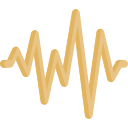Ancient Manuscripts
This medical book is an ancient text with a history of 52 years, spanning half a century. Its full title is no longer discernible due to the yellowed pages. However, the preface and content remain well-preserved. According to the preface, this is a book on traditional Chinese medicine prescriptions and herbs.The book states that the origin of prescriptions dates back to approximately 2697-2597 BCE. Records of these can be found in "The Inner Canon of Huangdi," China's first medical treatise. It also distinguishes between decoctions, pills, and medicinal wines.The preface mentions the Opium Wars, the cultural invasion of imperialism, and the rejection and destruction of Chinese medical science by the reactionary ruling class. The book aims to approach the original theoretical system of traditional Chinese medicine from a materialist dialectical viewpoint, critically inheriting its scientific content. It explains the pharmacological effects of prescriptions and herbs based on traditional Chinese medical theory while incorporating some Western medical verification work. Therefore, it includes annotations on chemical analysis, antimicrobial experiments, pharmacological research, and clinical reports.
The book introduces 20 treatment methods, categorizes drugs into 20 types, and prescriptions into 19 categories. It is designed to address common and frequently occurring diseases, serving as an ancient resource for studying traditional Chinese medicine. This book, used as a study text for the family's traditional Chinese medicine practice, was collected by my father.The "Preface" and "General Discussion" sections are presented here for reference.
 Reflections on the Family History of the TCM Heirs
Reflections on the Family History of the TCM Heirs Reflections on the Family History of the TCM Heirs
Reflections on the Family History of the TCM Heirs

 Click
Click 

 Click
Click 

 Click
Click 
















